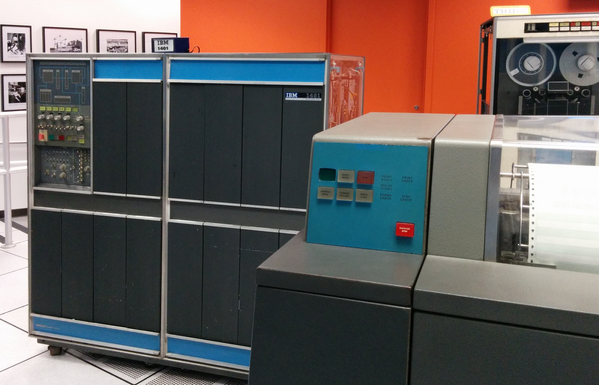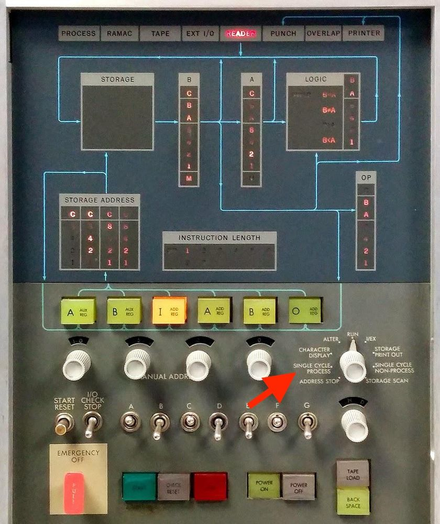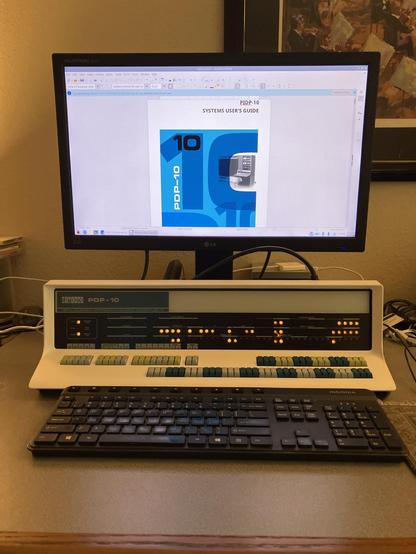Last week, the vintage IBM 1401 computer at the Computer History Museum started behaving strangely: it wouldn't halt. More specifically, if you had two HALT instructions in a row, it would halt for the first, but when you continued, it crashed mysteriously. Here's how we fixed it.... 1/N
The IBM 1401 computer lets you run code a single cycle at a time, so you can see what happens at each step. (The arrow on the control panel.) But when I tried to single-step through the bad HALT instruction, the computer immediately died in a distant memory location. Now we had two problems. 2/N
@kenshirriff My favourite CPU is the PDP-10 KI CPU, that not only let you run single cycles and let you input instructions directly on the front panel, but let you load memory words onto the push buttons and *edit* memory content. I’ve never seen that on any other CPU.
@ahltorp The IBM 1401 lets you load memory from the toggle switches, which is convenient but tedious. Is this the same as what you're describing on the PDP-10?
@kenshirriff If you by toggle switches mean switches with two physical positions, then that was the switches on most DECs.
But this was push buttons with lamps, so you could actually load a word onto the buttons, only flip the individual bits you wanted changed, and then store it back to either the same or another location.
@kenshirriff The PDP-10 KI is also one of the few mainframes I’ve worked with. I was responsible for getting 2 KI CPUs working around 1998, although I didn’t do hardly any of the actual debugging and repairing myself.
My PiDP-10 replica, powered by a Raspberry Pi 5. All the switches work. It comes with ITS, TOPS-10 and TOPS-20 operating systems running on top of Linux. Very cool.
@ahltorp @kenshirriff I had a front panel for one of those as a kid. My brother fished it out of a dumpster at University of Detroit. We had it on a table in the basement with a large DC power supply. I'd poke around with alligator clips trying to find which wires lit up which buttons. Great fun pretending I had a computer to run.
Gould SEL, late 70s, had similar.


